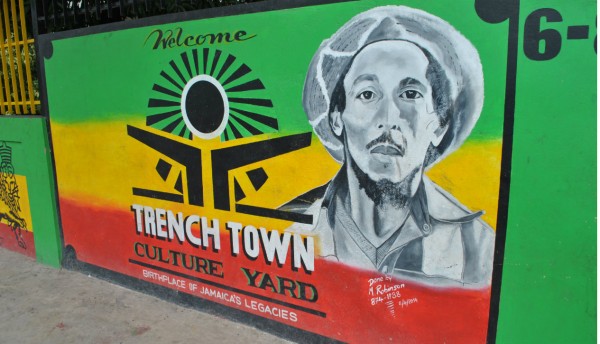2016 marks 35 years since the death of Jamaica’s most famous son, BobMarley. Thanks to the timeless inspiration of his music, fans still flock to Jamaica to discover the reggae icon’s life and history. While Bob was born in the rural village of Nine Mile, in the hills of St. Ann Parish, his music career was shaped in the bustling capital of Kingston. Follow this music-focused itinerary to get to know more about Bob’s life in Kingston:
Related: Escape the crowds at these less-traveled Caribbean cruise destinations
The Bob Marley Museum
The 19th-century, colonial era house on Hope Road was where Bob lived from 1975 until his death in 1981 and it retains most of the same characteristics as it did when he was alive, making it the perfect museum and archive. The Bob Marley Museum is Kingston’s most popular attraction so expect crowds, but don’t let that deter you from visiting. Whether you’re a hardcore reggae fan or just a casual visitor, touring the museum provides fascinating insights into Bob’s life and Jamaica history. The lesson starts outside where murals with Bob’s band, The Wailers, cover one wall and portraits of Bob and his seven sons cover another. In the middle of the courtyard, a bronze statue of Bob pointing toward the sky provides the centerpiece for the grounds. Inside, Bob’s studio, gold and platinum albums and even his favorite denim shirt, line the walls. A life-sized hologram brings Bob to life in one room and another recreates the record shop he used to frequent. The hour-long tour includes a 20-minute video and details about Bob’s life and family.
Related: The 10 absolute coolest things to do in Jamaica
Trench Town Culture Yard
Before Bob purchased his expansive house on Hope Road, he lived in a poorer part of Kingston known as Trench Town. This government housing community is where the roots of rock steady and later reggae music started. Bob moved to Trench Town when he was 13 and earned his nickname “Tuff Gong” on the neighborhood’s football (soccer) fields and street corners. The Trench Town Culture Yard reflects an important part of Bob’s life and music. It was here that he learned to play guitar from community elder Vincent “Tata” Ford and where he formed his group, The Wailers. Walking through the small rooms, you’ll experience the cramped conditions that Bob and other families lived under. Architectural diagrams show the original ‘1940s layout for the community and Bob’s first acoustic guitar, as well as the room he shared with his wife Rita. Outside, in the gravel-strewn yard, Bob’s first vehicle, a rusted blue van sits on one side and on the other, a life-like statue of Bob clutching his guitar. You can sit in the actual “government yard in Trench Town,” immortalized in Bob’s classic song “No Woman, No Cry,” and listen to current musicians play in a small studio in the center.
Tuff Gong, Kingston, Jamaica | Photo:Dubdem Sound System, via Wikimedia Commons
Tuff Gong International Studios
You can’t explore Bob Marley’s life in Kingston without visiting the legendary studio where he created his music. Tuff Gong Studios still boasts Bob’s grand pianos, trap drums and control boards that he used to form songs like ‘Trenchtown Rock,” “Stir It Up” and “No Woman, No Cry.” The tour guides you through the recording process as well as the manufacturing and distribution of CDs. Bob’s son Ziggy runs the studio and musicians continue to visit from all over the world to record so all sections of the studio might not be available if a recording session is in progress.

